The government published a consultation on school registers and national thresholds for legal intervention last week.
Aspire Attendance Tracker
Schools can track, analyse and compare their attendance data against 1,000s of other FFT schools using Aspire Attendance Tracker.
Log in to Aspire to access Attendance Tracker – log in here.
Not an FFT Aspire user? Learn more here.
They propose setting the following national thresholds for the circumstances in which a penalty notice for parents must be considered:
- 10 sessions of unauthorised absence including lateness in a term (where support has not been successful, has not been engaged with, or is not appropriate)
- Any incidence of unauthorised holiday in term time
- Any sessions of unauthorised absence immediately following a leave of absence in term time
- Any incidence of an excluded pupil being in a public place without reasonably justification during the first 5 school days of an exclusion
In this blogpost we look back to attendance data from the Spring term to assess how many pupils trigger each of the first three bullets above.
Data
We use daily attendance data collected from 6,800 primary schools and 2,600 secondary schools in England through FFT Attendance Tracker between January and April 2022. These are all state-funded mainstream and special schools.
We identify pupils in years 1 to 11 who were still enrolled at their school at the end of the Spring term and meet each of the following criteria at least once:
- Had 10 sessions of unauthorised absence or lateness after the register has closed (attendance code U) [1].
- Missed 1 or more session due to an unauthorised holiday (attendance code G)
- Missed 1 or more session due to unauthorised absence in the next session they were due to attend [2] at a school following a leave of absence (attendance code C).
The attendance data for the Spring term was affected by COVID-19, particularly in the second half term.
Results
First of all, we show the rate per 1,000 pupils who missed 10 or more sessions due to unauthorised absence in the Spring term.
This shows that this is far more common in secondary schools than primary schools. The rates for Years 9 to 11 at over 80 pupils per 1,000 are more than double the rates in Years 1 to 6.
Scaling these figures to the national population suggests there were around 410,000 pupils who missed 10 or more sessions due to unauthorised absence last term.
Rates of pupils missing school due to an unauthorised holiday were much lower and more likely to occur in primary schools than secondary schools last term.
Scaling these figures to the national population suggests there were around 200,000 pupils who missed at least one session due to an unauthorised absence last term.
Next, we look at the rate of pupils who followed a leave of absence with unauthorised absence. The prevalence of this was lower than the two previous criteria we examined.
Scaling these figures to the national population suggests there were around 64,000 pupils who missed at least one session due to an unauthorised absence last term.
Some pupils may have triggered more than one of the three proposed intervention criteria so we show how many triggered at least one. We do this by starting with pupils who had an unauthorised absence following a leave of absence, then add in additional pupils who had an unauthorised holiday and finally any other pupils who missed 10 or more sessions due to unauthorised absence.
Scaling these figures to the national population suggests a maximum of 550,000 pupils who triggered the proposed intervention criteria last term.
However, this will be an over-estimate.
Firstly, schools may have subsequently established the reasons for some unauthorised absences, particularly more recent spells.
Secondly, the criteria for 10 or more sessions of unauthorised absence or lateness also says “where support has not been successful”. This suggests that intervention should only be considered when support has not worked.
There are around 260,000 pupils who meet either the unauthorised absence following a leave of absence criterion or unauthorised holiday estimate. So the total estimate of the number meeting at least one of the three proposed intervention criteria in the Spring term is between 260,000 and 550,000.
Characteristics of pupils who trigger the proposed intervention criteria
Now let’s look at the characteristics of pupils who triggered the proposed intervention criteria last term.
Firstly, pupils with special educational needs (SEN) were more likely to do so. Differences between pupils with SEN and other pupils were greater in secondary schools than primary, with pupils with SEN twice as likely as other pupils to trigger one of the three criteria.
Secondly, disadvantaged pupils, were more likely to do so. In secondary schools, the rate among disadvantaged pupils was three times higher than among other pupils.
There are some fairly intractable problems with the current indicator of disadvantage based on being eligible for free school meals in the last 6 terms. Nonetheless, these results suggest that it is poorer families at most risk of fines at a time when the cost of living is so high.
Summing up
In the Spring term somewhere between 260,000 and 550,000 pupils met one of the three proposed new criteria for intervention due to absence.
In practice we would not expect all of these cases to lead to penalty notices. Firstly, we stress that this number will be as over-estimates as will have continued to establish reasons for unauthorised absences. Secondly, schools will work with families to avoid the use of interventions where possible.
By way of comparison with the existing guidelines, there were 333,000 penalty notices issued in the whole of 2018/19, the final full year prior to the pandemic, according to official statistics.
Some families may be at risk of multiple fines as they may have more than one child at risk.
The consultation says that schools and local authorities should work together to choose which legal interventions are appropriate. It proposes that there should be a maximum of 2 fines per parent per pupil. This presumably will involve DfE providing data to local authorities from that collected from schools, particularly if pupils go to schools in a different local authority to where they reside.
All this gives rise to the question of what support schools can give. There may be adjustments they can make to support children to go to school. But some of the support that may be needed may be beyond a school’s gift. This may arise where access to social, health or specialist services is deemed necessary.
- We do not include sessions where the pupil is recorded as late before the registers close (code L)
- We do not include attendance codes (including D, X and Y) which indicate that a pupil was not expected in school.
Want to stay up-to-date with the latest research from FFT Education Datalab? Sign up to Datalab’s mailing list to get notifications about new blogposts, or to receive the team’s half-termly newsletter.

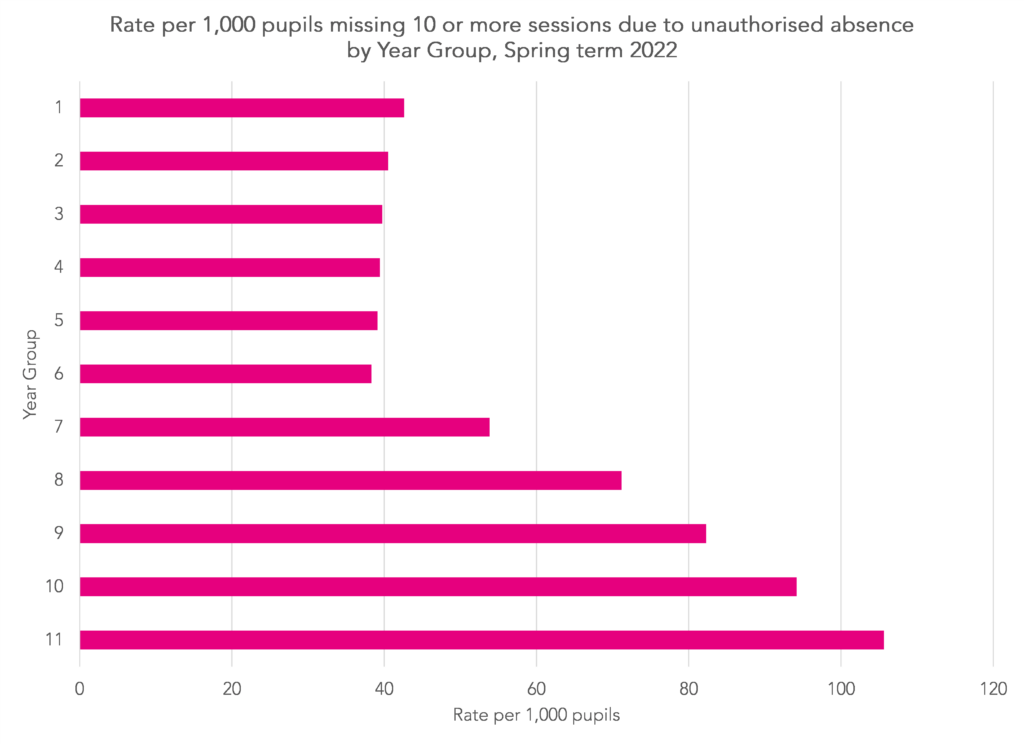
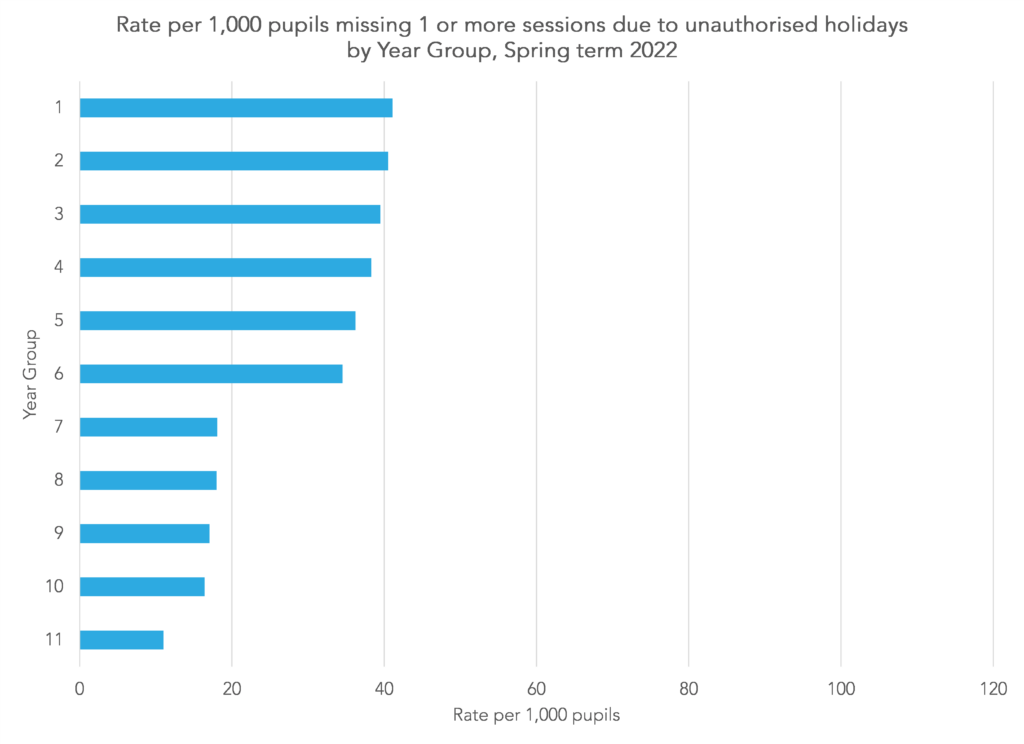
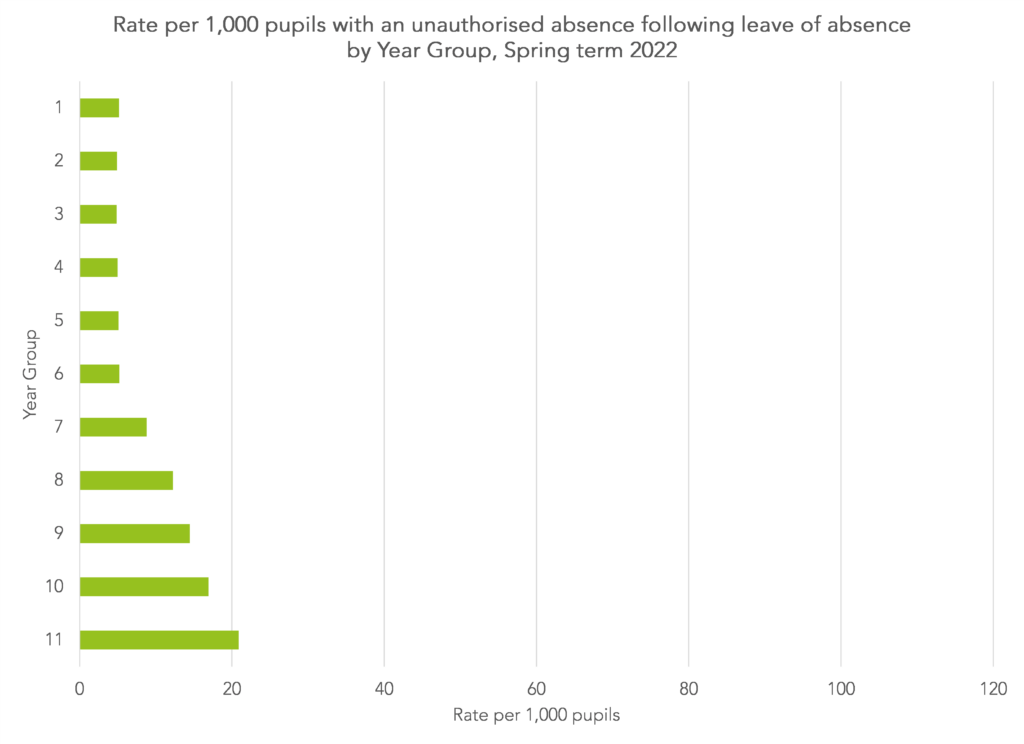
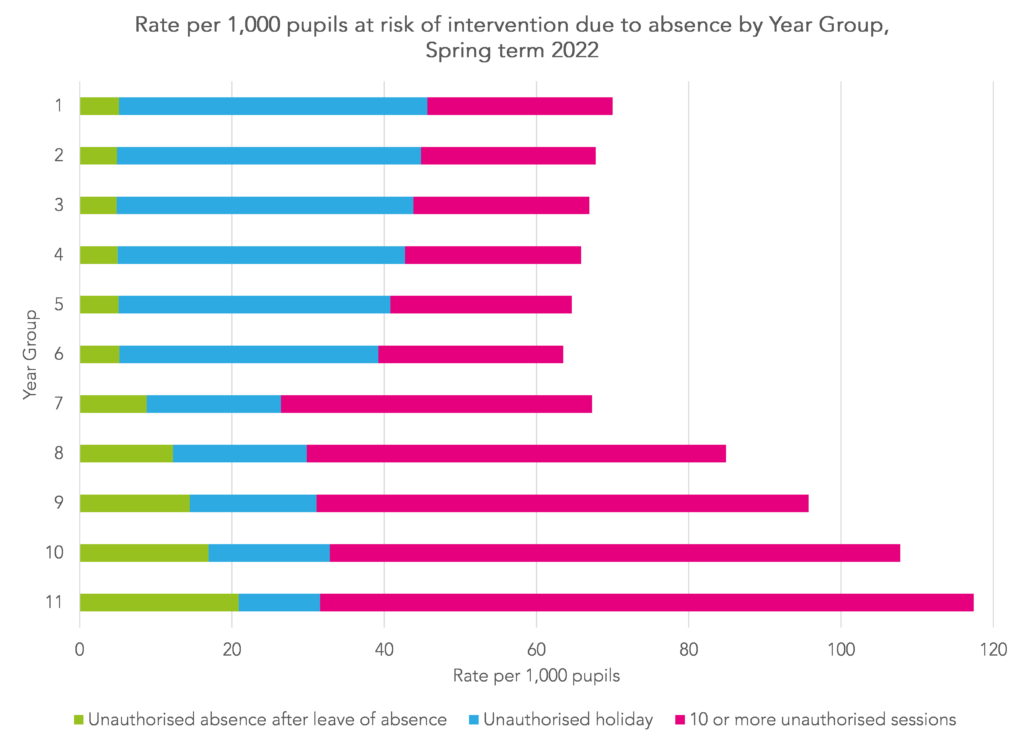



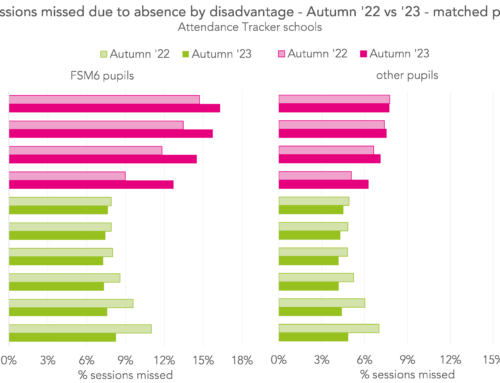
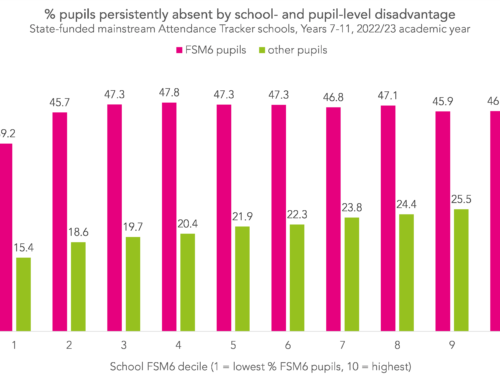


Leave A Comment